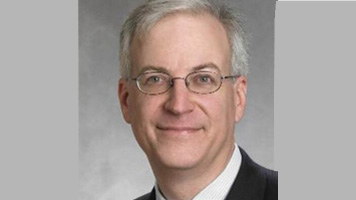Jessell | Forget Tribune. Sinclair Keeps Moving Forward


Harry Jessell
When I last wrote at length about Sinclair last summer, it was sunk — well, not sunk, but listing badly — after the FCC torpedoed its $3.9 billion merger with Tribune after determining that Sinclair had misled it on the transfer application.
Sinclair had screwed up, undermining the entire deal with half-truths just so it could hang on to a few stations that needed to be off-loaded to comply with local ownership rules.
Nine months later, Sinclair is still not out from under the trouble it created for itself. It has yet to reach settlements with the FCC that will allow it to resume buying TV stations or with Tribune, which sued Sinclair for steering the merger into a regulatory ditch.
But Sinclair has not allowed the merger-gone-bad to slow it down. Blocked from scooping up more TV stations, Sinclair looked elsewhere for growth and found it, no doubt driven by Executive Chairman David Smith.
Confirming much speculation, it announced late last Friday an agreement to buy 21 of the former Fox regional sports networks being spun off from the Disney-21st Century Fox deal.
At $9.6 billion, I believe it is the biggest acquisition ever by a non-network station group. To get it done, Sinclair is borrowing $8.2 billion, but it claims the networks will be immediately accretive to earnings. Hollywood media entrepreneur Byron Allen is chipping in for a piece of the equity and aligned to supply non-game content to the networks.
On a call this morning with analysts, Sinclair CEO Chris Ripley said the “incredibly transformative deal … will forever change the complexion of Sinclair.”
And the finances, too. The RSNs had combined pro forma revenue of $3.8 billion in 2018, $1 billion more than Sinclair’s $2.8 billion, and EBITDA of $1.7 billion, nearly twice that Sinclair. When merged, Sinclair will derive 70% of its revenue from fees from MVPDs and 27% from advertising. Today, the split is 43% from fees and 51% from advertising.
Ripley said the RSNs will complement the broadcasting business and open up new opportunities in digital streaming and in legalized sports gambling. “There are also opportunities for increased advertising, cross-promotion collaboration, enhanced non-game programming and remote production.”
Sinclair’s deep plunge into regional sports was foreshadowed early this year when it partnered with the Chicago Cubs to launch a new Cubs-centric network, the Marquee Sports Network, next year and then when it joined a consortium buying the New York-based Yes Network from Disney for $3.5 billion. The Yes buyers also include Amazon, private equity firms and the Yankees, which are the cornerstone of the network.
The Fox, Yes and Cubs deals cement Sinclair status as a major sports player, which is what you want to be these days as sports and news are linear TV’s bulwarks against the onslaught of on-demand digital.
(I should note that Sinclair also has some national sports ventures. In 2016, it snapped up the Tennis Channel for $350 million, and, in 2017, it relaunched American Sports Network as Stadium on multicast and OTT and loaded it with second-tier college sports.).
There doesn’t appear to be a lot of local synergy as the networks and Sinclair TV stations major overlap in only six large and medium markets — Minneapolis, Milwaukee, Cincinnati, Nashville, Oklahoma City and St. Louis. (There may be more overlap in smaller markets as some of the RSN’s serve multiple markets.)
On the other hand, the regionals stretch Sinclair’s footprint into at least a dozen or more markets where it hasn’t been before, including New York (Yes), Los Angeles (Prime Sports West and Prime Ticket) and Chicago (Marquee). So, with the deals, Sinclair recovers some of the reach it lost in the Tribune deal. “With this combination, we will have either local news or premium live sports content in 19 of the top 25 markets,” Ripley told analysts this morning.
By combining the RSNs and its TV stations, Sinclair may be able to attract more of the national spot money that has been slipping away from broadcasters.
Unfortunately, the overlaps may complicate Sinclair getting approval from the Justice Department’s antirust division. The American Communications Association is already squawking that the deal is anticompetitive, claiming ownership of an RSN and Big Four affiliate in a market will give Sinclair undue power to raise carriage fees.
Sinclair has always had news ambitions and it seems to have given it freer rein this year, hiring a string of name journalists to add national dimension to its local newscasts, if not start a national service of some kind. Their common denominator is Fox News, suggesting that Sinclair is going to continue to tilt to the right in news and commentary.
Now on board with Sinclair are former 60 Minutes correspondent and Fox News pundit Lara Logan, former Fox News reporter James Rosen, former Fox News commentator Sebastian Gorka and former Fox News talk show host Eric Bolling.
Bolling, who is also seen on Glenn Beck’s Blaze TV OTT service, has put together a weekly talk show that streams on Sinclair station websites each Wednesday at 7 p.m. On April 17, his guest was none other than The Donald himself.
The newcomers will join Sharyl Attkisson, who anchors Sunday morning’s Full Measure news magazine on Sinclair stations, and Boris Epshteyn, who produces consistently pro-Trump commentary for the stations’ newscasts.
We’ll watch to see if Sinclair can meld the talent into something greater than its parts.
All that’s not all.
At the same time, Sinclair has been charging ahead in news and sports, it leaped into OTT with a multichannel service called Stirr. It’s just like all those all virtual MVPDs like DirecTV Now and YouTube TV you’re probably familiar with, except that it’s free (ad-supported) and comprises channels you’ve mostly never heard of — Charge, Cheddar, Comet, CONtv, Dove Channel, Dust, FailArmy, Gravitas, Mobcrush, MovieMix, NASA TV, Outdoor America, Pet Collective, Soar, TBD, World Poker Tour and the aforementioned Stadium.
At relatively little cost, Stirr gives Sinclair entry into the booming streaming space where it can size up the platform and see if it warrants a more serious investment.
At the Department of Justice workshop on the local advertising marketplace last Friday, Sinclair CEO Chris Ripley said Sinclair is now selling ads for other streaming services and that it is the fastest growing business in the company’s history.
“Why? It’s easy for the sales force to sell the same ads from the same advertisers by just putting them on a different platform.”
In response to a question on how Sinclair is adapting to the digital challenges, Ripley summed up the new post-Tribune strategy. “We’re trying to spread our content to as many platforms as possible so that we can actually compete for the advertising dollar on those platforms.”
And, of course, Sinclair continues to lead on ATSC 3.0, convinced that it will multiply the value of broadcast spots through targeting, and enable lucrative new businesses like datacasting. It’s been pouring money into the development 3.0 receive chips, upgrading RF facilities and exploring datacasting businesses through its Spectrum Co. joint venture with Nexstar.
So, I’m thinking now that the collapse of the Tribune deal was not a setback, but a sign from the media gods that Sinclair ought to break out of the confines of broadcasting and explore other growth opportunities. I can’t say for sure that it was divine inspiration or just David Smith’s acquisitive nature, but that is precisely what Sinclair has done.
P.S. Last week, I told you that I doubted that the DOJ’s workshop would actually prompt Justice to rethink their hard line against network affiliate duopolies. But having read coverage of Friday’s session by our managing editor, Mark Miller, I now think that maybe it might have done some good for the broadcasters’ cause.
Ripley of Sinclair along with Tegna CEO Dave Lougee, NAB chief counsel Rick Kaplan and BIA Advisory Services’ Rick Ducey made a powerful case for relief and their arguments were reinforced by executives from Facebook and Comcast Spotlight, the cable interconnect.
The unanimous message: Advertisers do not need protection from broadcast duopolies because advertisers have other places to go to other than broadcasting to market their goods — social media and cable among them.
It defies common sense for DOJ to insist that TV stations still provide a unique, irreplaceable advertising service. But, then again, common sense seems rarely to carry the day in Washington.
Harry A. Jessell is editor of TVNewsCheck. He can be contacted at 973-701-1067 or here.
























Comments (0)